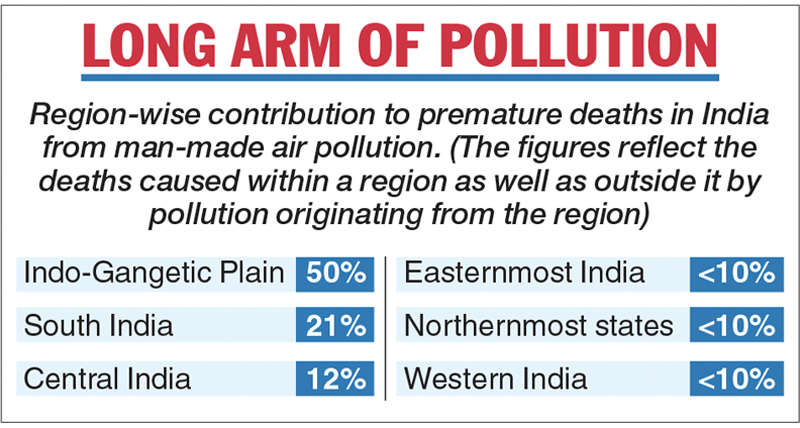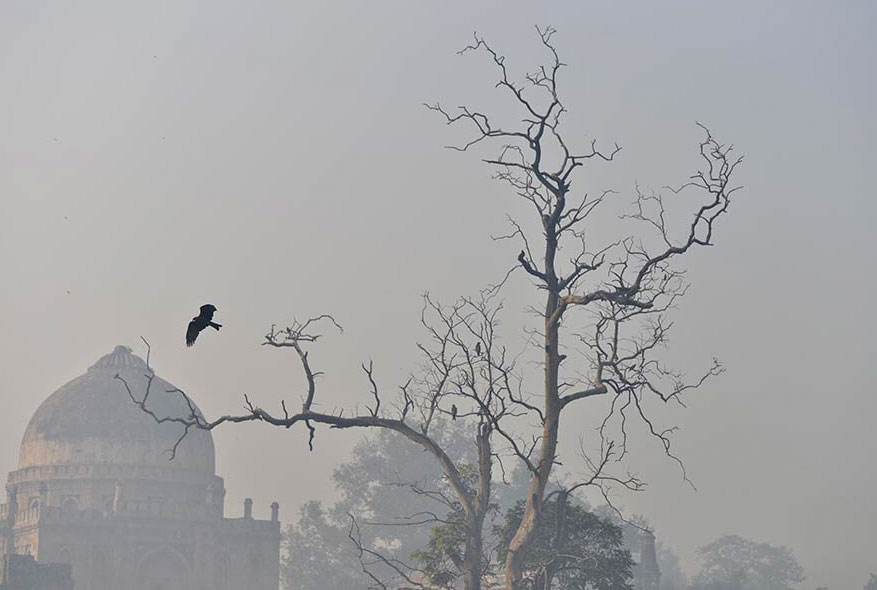A study has identified the Indo-Gangetic Plain as the source of nearly half the premature deaths from air pollution in the country, affecting people within and outside the region.
Indian and US researchers have found that substantial proportions of the air pollutants generated within the region are transported by winds and cause up to 30 per cent of the pollution-driven premature mortality in India’s central, eastern and northernmost states.
“Our findings highlight the need for nationwide strategies to curb air pollution. In several regions, local actions will not be sufficient to prevent all premature mortality,” said Chandra Venkataraman, a study team member from IIT Bombay.
“In every region, pollutants from other regions have an impact,” she told The Telegraph.
The World Health Organisation’s air pollution database for 2018 puts 12 of the world’s 14 worst polluted cities in the Indo-Gangetic Plain.
The new study has been described as the first to examine the impacts of pollutants transported across six artificially demarcated regions of India. It has found that on an average, only 60 per cent of premature deaths result from man-made air pollution — emissions — from within the region where the deaths occurred.
About 35 per cent of the premature deaths across the six regions result from exposure to emissions from the five other regions and from outside India. Four per cent are linked to natural pollutants like dust.
“Our findings have implications for policies to control air pollution,” said A.S. Ravishankara, a professor of chemical and atmospheric sciences at the Colorado State University in the US who led the study. The findings have just been published in the research journal GeoHealth.
“It is like a water dispute in reverse: downriver people want the water, but downwind recipients of air pollutants don’t want it,” Ravishankara told this newspaper.
“But they cannot control it since the sources of the pollutants are in a different region.”
The study has suggested that the easternmost region — made up of the northeastern states — bears the brunt of the health impacts of transported pollutants. About 39 per cent of the premature mortality in this region is caused by inhalable particulate matter sized 2.5 microns (PM2.5) blown in from outside.
The scientists combined emission inventories and weather patterns through computer simulations to determine how air pollutants move across the six regions through the year.
They also applied mathematical models to estimate the expected premature deaths in each of the six regions with and without emissions from specific regions.
The exercise used emission inventories developed at IIT Bombay that take into account the emissions of 10 pollutants from key sectors, including power generation, industry, transport, housing, crop-residue burning and brick production.
Multiple earlier studies had assessed the health impacts of air pollution in India. A study earlier this month had estimated that exposure to PM2.5 had contributed to about 1.24 million deaths last year.












